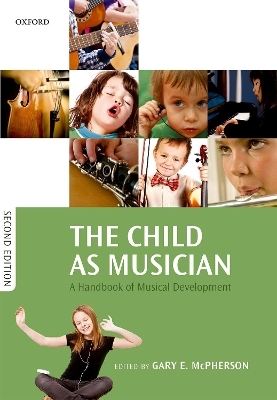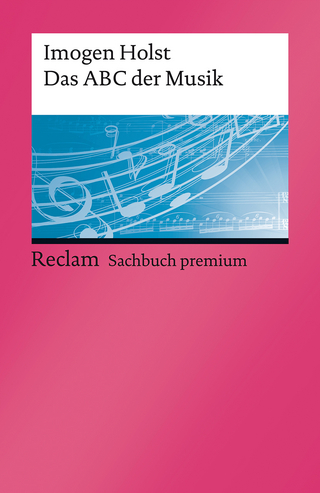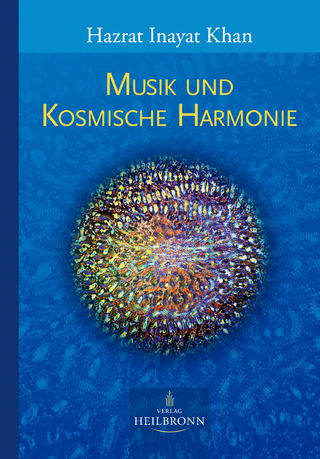
The Child as Musician
Oxford University Press (Verlag)
978-0-19-881715-4 (ISBN)
The new edition of The Child as Musician: A Handbook of Musical Development celebrates the richness and diversity of the many different ways in which children can engage in and interact with music. It presents theory - both cutting edge and classic - in an accessible way for readers by surveying research concerned with the development and acquisition of musical skills. The focus is on musical development from conception to late adolescences, although the bulk of the coverage concentrates on the period when children are able to begin formal music instruction (from around age 3) until the final year of formal schooling (around age 18).
There are many conceptions of how musical development might take place, just as there are for other disciplines and areas of human potential. Consequently, the publication highlights the diversity in current literature dealing with how we think about and conceptualise children's musical development. Each of the authors has searched for a better and more effective way to explain in their own words and according to their own perspective, the remarkable ways in which children engage with music.
In the field of educational psychology there are a number of publications that survey the issues surrounding child and adolescent development. Some of the more innovative present research and theories, and their educational implications, in a style that stresses the fundamental interplay among the biological, environmental, social and cultural influences at each stage of a child's development. Until now, no similar overview has existed for child and adolescent development in the field of music. The Child as Musician addresses this imbalance, and is essential for those in the fields of child development, music education, and music cognition.
Gary E. McPherson, Melbourne Conservatorium of Music, University of Melbourne, Australia, Ormond Professor and Director
Section 1: Development
1: Richard Parncutt: Prenatal Development
2: Sandra E. Trehub and Franziska Dege?: Reflections on Infants as Musical Connoisseurs
3: Donald A. Hodges: The Child Musician's Brain
4: Susan Hallam: Musicality
5: Kathleen A. Corrigall and E. Glenn Schellenberg: Music cognition in childhood
6: Jackie Wiggins: Musical Agency
7: Adam Ockelford: The potential impact of autism on musical development
Section 2: Engagement
8: E. Glenn Schellenberg: Music and Nonmusical Abilities
9: Janet Mills & Gary E. McPherson: Musical Literacy: Reading traditional clef notation
10: Chris Philpott: Musical Literacy: Music as language
11: Andrew Brown: Engaging in a sound musicianship
12: Emery Schubert & Gary E. McPherson: Underlying Mechanisms and Processes in the Development of Emotion Perception in Music
13: David J. Elliott & Marissa Silverman: Felt Experiences of Popular Musics
14: Sharon G. Davis: Children, Popular Music, and Identity
15: Paul Woodford: The Child as Music Critic
16: David J. Hargreaves, Adrian C. North, & Mark Tarrant: How and why do musical preferences change in childhood and adolescence?
Section 3: Differences
17: Paul Evans: Motivation
18: Gary E. McPherson & Aaron Williamon: Building gifts into musical talents
19: Judith A. Jellison: Inclusive Music Classrooms: A Universal Approach
20: Costanza Preti & Katrina S. McFerran: Music and Wellbeing during Illness
21: Katrina S. McFerran: Adolescent Music Is Not Problematic
Section 4: Skills
22: Gary E. McPherson, Jane W. Davidson and Paul Evans: Playing an instrument
23: Margaret Sarah Osborne: Building performance confidence
24: Graham Welch: Singing and vocal development
25: Kathryn Marsh & Susan Young: Musical play
26: Pamela Burnard and Hsu-Chan Kuo: The Individual and Social Worlds of Children's Musical Creativities
27: Peter Webster: Computer-Based Technology
Section 5: Contexts
28: Gordon Cox: Historical Perspectives
29: Frank Abrahams & Daniel Abrahams: Child as Musical Apprentice
30: Patricia Shehan Campbell: Global Practices
31: Alexandra Kertz-Welzel: Transcultural Childhoods
32: Lee Higgins: My Voice is Important Too: Non-formal Music Experiences and Young People
33: Susan A. O'Neill: Transformative Music Engagement and Musical Flourishing
34: Jane W. Davidson & Robert Faulkner: The transition from adolescent to adult music learner
35: Stephanie E. Pitts: Fostering lifelong engagement in music
| Erscheinungsdatum | 26.10.2017 |
|---|---|
| Verlagsort | Oxford |
| Sprache | englisch |
| Maße | 170 x 247 mm |
| Gewicht | 1158 g |
| Themenwelt | Kunst / Musik / Theater ► Musik ► Musiktheorie / Musiklehre |
| Geisteswissenschaften ► Psychologie ► Entwicklungspsychologie | |
| Geisteswissenschaften ► Psychologie ► Pädagogische Psychologie | |
| Geisteswissenschaften ► Psychologie ► Sozialpsychologie | |
| ISBN-10 | 0-19-881715-0 / 0198817150 |
| ISBN-13 | 978-0-19-881715-4 / 9780198817154 |
| Zustand | Neuware |
| Informationen gemäß Produktsicherheitsverordnung (GPSR) | |
| Haben Sie eine Frage zum Produkt? |
aus dem Bereich


